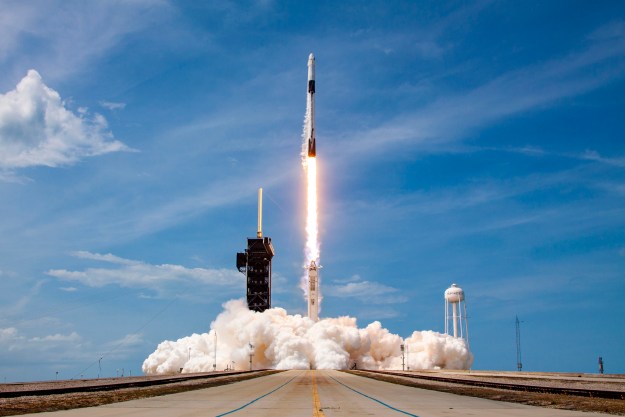NASA is targeting November 14 for the maiden launch of its next-generation Space Launch System (SLS) rocket from the Kennedy Space Center in Florida.
The rocket will power an uncrewed Orion spacecraft toward the moon where it’ll come within 62 miles of the the lunar surface before returning to Earth for a splashdown landing on December 9.
The mission, Artemis I, is a test run for the Artemis II mission that will take the same route, but with astronauts aboard. After that, Artemis III will put the first woman and first person of color on the lunar surface. Scheduled for no earlier than 2025, Artemis III will also mark the first crewed moon landing since the final Apollo mission in 1972.
Airbus Space, which built part of the Orion spacecraft, on Monday shared an awesome aerial image showing the SLS rocket on the launchpad ahead of next week’s maiden flight.
Guess who's back… back again! 😉#PléiadesNeo 🛰 spotted @NASA_SLS 🚀 back on the launch pad!
With @NASA_Orion onboard, last preparations are ongoing before launch on 14th November. 📅#OrionESM #Artemis pic.twitter.com/SSgcg6hKe9— Airbus Space (@AirbusSpace) November 7, 2022
The rocket looks tiny in the photo, though stand at its base and you’ll quickly appreciate the full 98-meter height of this mighty space vehicle.
And with 8.8 million pounds of thrust at launch — that’s 13% more power than the Space Shuttle and 15% more than the Saturn V rocket that powered the Apollo missions — the liftoff promises to be a spectacular sight, one that’s set to attract thousands of people to Florida’s Space Coast, with many more watching online.
The SLS rocket arrived at the launchpad on Friday after spending the whole of October inside the Vehicle Assembly Building (VAB) about four miles away. Before that, it had been on the launchpad for several launches that were disrupted by technical issues. The decision to move the SLS to the VAB was prompted by the approach of Hurricane Ian toward the end of September. While inside the VAB, NASA engineers were able to perform work on correcting the earlier issues and readying the rocket for next week’s launch.
The mission, when it finally gets underway, will usher in a new era of space exploration that could eventually see a permanent moon base set up for human habitation, with the first crewed missions to Mars also part of the plan.
Editors' Recommendations
- NASA astronauts will try to grow plants on the moon
- NASA astronauts need good weather for Crew-8 launch. Here’s how it’s looking
- NASA video looks ahead to an exciting 2024
- NASA astronauts sign their moon rocket
- Watch NASA’s capsule with asteroid samples hurtling to Earth


